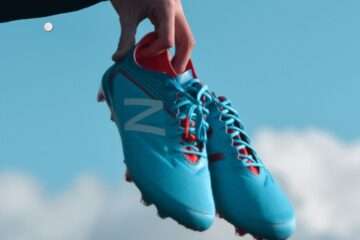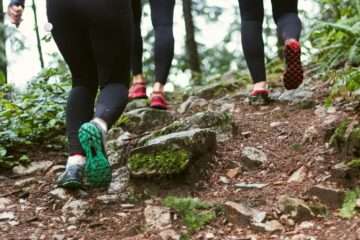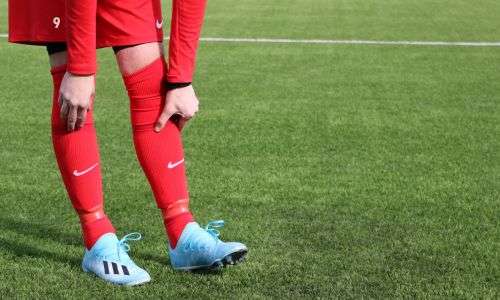
Our feet are one of the most fragile areas of the body, and with the amount of stress we put on them playing football, it’s essential to know which soccer cleats are best for wide feet.
As we gathered reviews and consulted with the players’ community to discover the key factors they prioritize when purchasing new soccer cleats, we also addressed a specific concern often raised: ‘What soccer cleats are best for wide feet?
While many couldn’t narrow down their preferences to just one feature, there was a clear consensus on an overall favorite. So, before uncovering our ranking of the most important characteristics that came out after the voting pole, let’s address this common question about wide feet.
We’ll also further explain why we believe our recommended cleats are the best investment a soccer player of any level can make!
Which soccer cleats are best for wide feet?
Jump into Review:
1. Adidas Unisex-Adult Goletto VIII Firm Ground Soccer Shoe
2. Underarmour Men’s Spotlight Fran 2.0 Football shoe
3. Adidas Men’s Samba Classic Soccer Shoes
4. MFSH Unisex-Cleats Soccer Shoes for Big Boy:
5. Qzzsmy Men’s Athletic Soccer Football Cleats
Wide feet are like regular feet, but wider, which raises the question: Which boots are best for wide feet?
It’s important to note that everyone has different foot shapes, volumes, and a wide variety of characteristics. That’s why most brands create boots intended to fit as many people as possible. They don’t typically design boots specifically for wide or narrow feet. Instead, they aim to make boots that most people will find comfortable.
So if your feet are exceptionally wide, you’re unlikely to find a boot that fits perfectly out of the box but certainly, there are the most relevant ones. There will always be an adjustment or break-in period, during which the upper will stretch to accommodate the shape of your feet. Leather boots tend to stretch more, making them a good option for wide feet.
Must Read: 5 best soccer cleats for wide feet
Choosing the Perfect Soccer Cleats for Wide Feet
There are seven characteristics to keep an eye on when buying cleats for wide feet, and we’ve ranked them in terms of importance.
Criterion Number 7: Looks and Aesthetics
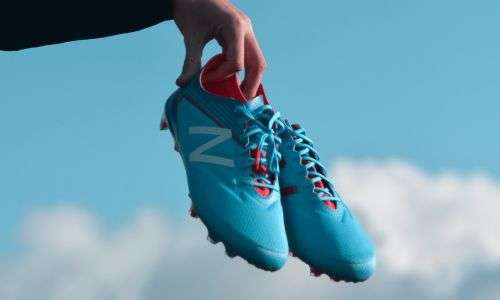
At number seven, we have the looks and aesthetics of the shoe. We’re a little bit different in this one in that, however, overall, we agree that looks are the least important thing when choosing a new pair. Our player community also agrees with us, with only six percent of choosing it in our poll!
Criterion Number 6: Price
Let’s consider the pricing aspect, ranked at number six, for a few important reasons. Low-range shoes, typically priced around $40, are crafted from budget-friendly materials, resulting in reduced cushioning, support, and durability. This might necessitate purchasing three pairs per year.
On the contrary, high-range shoes, priced at around $120, provide enhanced support and cushioning and are built to last a full year. Now, ponder this: Would you rather buy three $40 pairs annually or invest in a single $120 pair that offers superior support and cushioning? It’s an obvious choice, and we firmly believe that a quality pair of shoes is the most valuable investment for any soccer player.
Criterion Number 5: Weight
Number five is the weight of the shoes. The lighter the shoe, the less weight you’ve got to carry around the football field, right? And this is why brands market their shoes as being ultra-light. But it is important to note that some cheaper shoes might be light but unlikely to have the proper support in place. Yeah, in general, we’re not in favor of heavy shoes! No, we’re not!
Criterion Number 4: Grips
Now at number four on our list is the grips. This wouldn’t have come in that high on our list initially as we’re really lucky to be always playing on very grippy floors.
However, many of you commented on this on our polls, and it got us thinking of the nightmares we’ve had in the past playing on pretty much ice rinks, and it gives you no confidence at all! Often, the lower-range shoes are made from cheaper materials, which we’ve already said, and these will wear away quicker, including the grip. However, it’s difficult to know how grippy the shoe is going to be before you buy it.
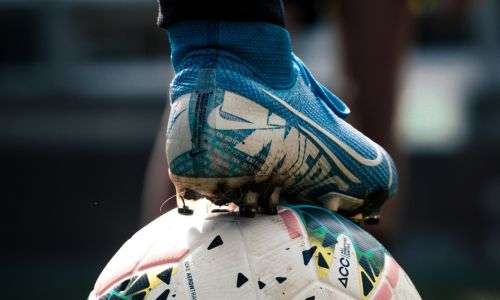
Often, you might play in a hall that’s so dusty it doesn’t matter how grippy your shoes are; it just creates a layer of dust over this grip, and there’s nothing you can do about it apart from maybe wiping your feet on a wet towel at the side of the court, which we used to do a lot!
Criterion Number 3: Durability
Moving on to number three is durability. Durability was one of the most common answers that players gave of what they look for in soccer cleats for wide feet, with a lot of you saying you wouldn’t repurchase or recommend a pair if the durability wasn’t good enough.
But what is good enough?
Well, durability is another area where the top-end shoes will outshine the lower-end shoes because they’ll have been made with more technologies and better quality materials. This is quite clear from the marketing of various brands. For example, we’ve seen the “V-Durable” from Victor, “Tough Guard” from Yonex, and “Tuff Tip” from Li-Ning. This is generally why we’d recommend investing in a better pair of shoes as they should last a lot longer!
Criterion Number 2: Fit for Your Foot Type
When choosing your shoes, you have to make sure they fit your foot type. For example, if you have a long and flat foot, then you shouldn’t go for a normal shoe. In that case, you might want to opt for an insole to massively improve the fit! or can check our recommended 5 best soccer cleats for wide feet
As an uncomfortable pair of soccer shoes will limit your movement on the field and also give you blisters.
Pro Tip: If you do get blisters a lot, then it’s really important to wear your shoes around the house for a few hours before taking them on the playing field, Some players even put them in the oven first to soften them up.
Criterion Number 1: Comfort and Support
When it comes to comfort and support (our top priority), over 70% of professionals agree that it’s crucial, and so do we. We consulted with our Team GB physio and other experts, and here’s what they emphasized:
Your shoes should act as both a rigid lever and a mobile adapter for your feet. This means they should provide strong ankle support, preventing flopping or bending, especially during the twists, turns, and jumps in football. Additionally, look for shoes with a bottom hole – it adds stability by preventing excessive folding and twisting. For those with flat feet, opt for structured shoes, while those with stiffer feet or who play on hard floors should choose cushioned options. High-end shoes often incorporate advanced materials for better joint impact absorption.
Conclusion
In conclusion, as reiterated throughout this article, the old saying holds true when it comes to soccer cleats for wide-footer players: You generally get what you pay for. Regardless of whether you’re a casual player or a frequent one, we strongly advise steering clear of low-range cleats and opting to invest in a quality pair.


